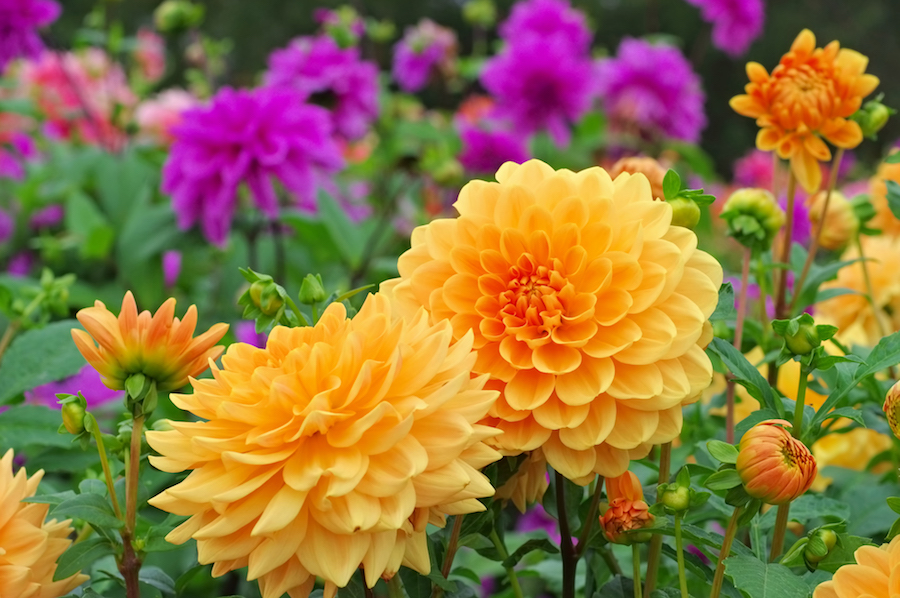Have your dahlias gone black?
It’s time to put them away for the winter – follow our 5-step guide
If you want to enjoy your dahlias next year, dig them up now and store them for winter. Here’s how to do it.
As the first frosts arrive, it’s time to lift dahlia tubers and put them in storage over winter, ready to replant next year.
Of course, some gardeners will leave the tubers in the ground – and keep their fingers crossed that we have a mild enough winter to keep these tender perennials going for another year, helping them along by cutting the spent plants down to ground level, applying a thick layer of mulch on the soil surface, and maybe even an upturned pot to stop persistent rain soaking and rotting the tubers.
But dahlias aren’t very adept at sustaining long periods of cold, wet or frosty weather – and if you live in a really cold, wet part of the country, you may be better off lifting them.
Here’s our step-by-step guide for how to do it…
1. Wait until the first frosts

Wait ’til frosts blacken the plants before lifting
Let the first frosts blacken the leaves to allow maximum time for the plant to make strong tubers. Then tidy up the plants by cutting back the stems to around 10cm (4in) high.
2. Label the plants
Lifting the dahlias. pic.twitter.com/YJytxiKVFO
— Craig Hutchinson (@MrAllotment75) October 16, 2017
Tie a label to the shortened stem of each variety, so you can identify the varieties you’ll be replanting next year. Do it before you lift all the tubers, or it will become confusing.
3. Dig carefully

Take care when digging up tubers
With a garden fork, dig around the perimeter of the plant to gently loosen the tubers. You do not want to be going in hell for leather and risking your fork damaging them. Lift the tuber out of the ground in one piece if you can, as bits that break off won’t regrow without an intact piece of crown and bud.
4. Clear off the soil

The next step is brushing off soil
Remove soil around the tubers, which will be a piece of cake if you have sandy soil but trickier if you live on clay soil, in which case you may need a brush to help remove a lot of the caked-on dirt. Take care to hold the tuber by the main stems, so you don’t damage the crown or the clumps underneath.
5. Dry them off
Leave the tubers upside down in a greenhouse or shed to dry off, and once that’s done, remove any remaining soil with your hands and cut off any bits that look damaged or diseased. You can also cut back the stem by half again.
Put each tuber on newspaper, cover them with wood chips or compost, and wrap the paper around the tubers before placing them loosely in a cardboard box to store in a garage, shed or other frost-free but cool building.
Follow these steps, and hopefully they will be ready to be revived come spring for re-planting.
The Press Association
Latest posts by The Press Association (see all)
- 3 easy Mary Berry recipes to make this season - November 22, 2024
- In Pictures: Party stalwart kept New Labour in touch with traditional supporters - November 21, 2024
- 6 easy indoor exercises to try this winter – and why they are good for you - November 19, 2024
- Martin Clunes: I can’t afford to retire – I’ve got too many horses - November 19, 2024
- How to avoid plant losses, flowering disappointments and container catastrophes - November 17, 2024





















